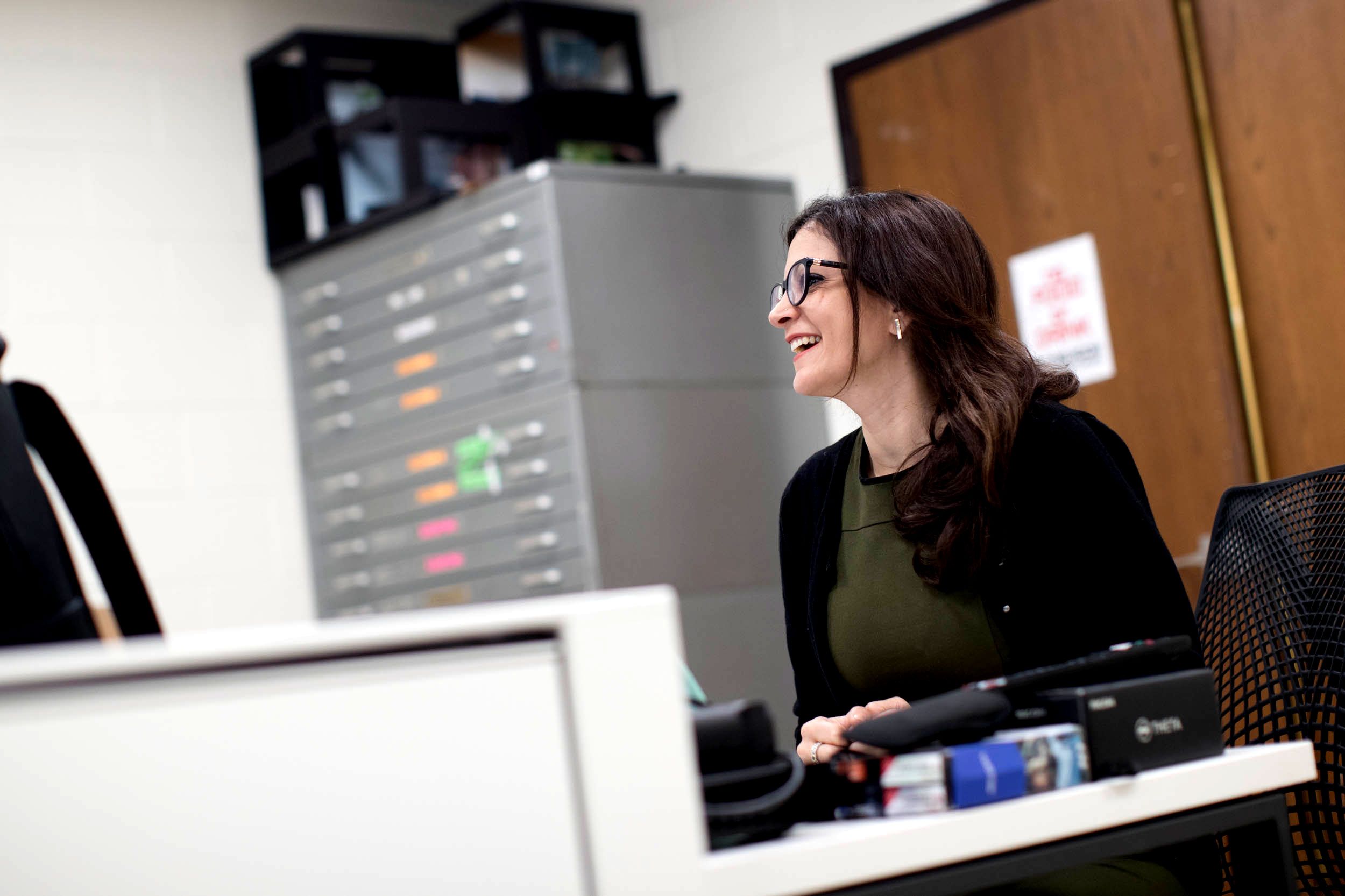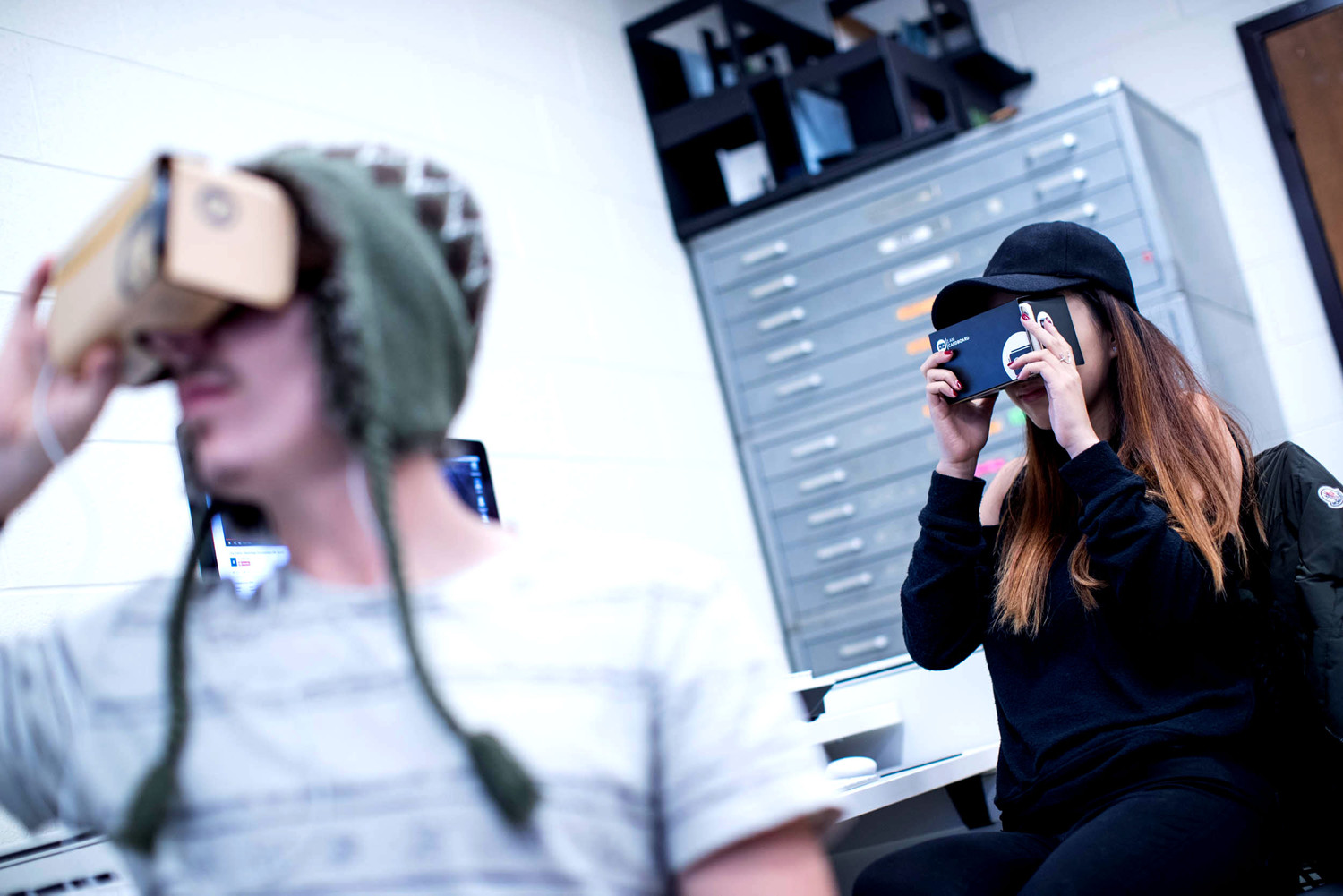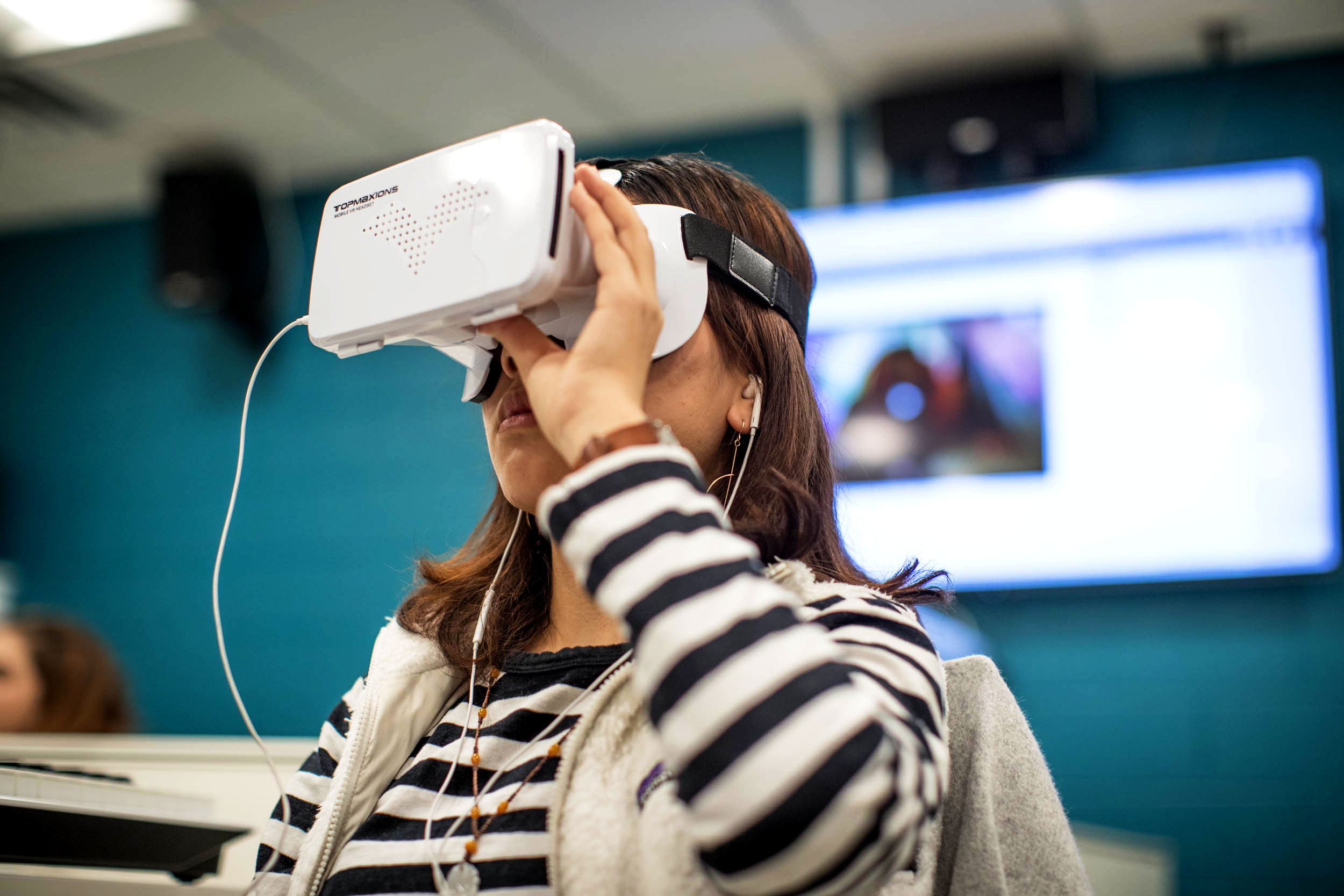Sitting in a basement computer lab in the University of Virginia’s Department of Drama, students in Mona Kasra’s class pop on a headset and pop into 360-degree worlds of their own creation.
Kasra, an assistant professor of digital media design, led nine students in a semester-long experiment with 360-degree video and virtual reality, technologies that she believes will play a major role in the future of storytelling. This month alone, Time Inc.’s VR brand, Life VR, created a virtual reality experience taking viewers back to the Pearl Harbor attacks, while the NBA broadcasts games through Samsung’s VR headsets.
“Right now, everyone is trying to understand virtual reality and 360 tools, especially in terms of storytelling,” said Kasra, who will teach the course again in the spring semester. “These are existing and emerging tools that can help with storytelling, performance or narrative, generally expanding what media can do in our current culture.”

Kasra critiques students’ work during the final class of the semester. (Photo by Sanjay Suchak, University Communications)
Kasra challenged her students to create their own 360-degree films telling a story that was important to them. Each student spent several days shooting their scenes with a specialized camera, then took to their computers to compile and edit the footage. Kasra used class time to screen the works-in-progress, offer her advice and encourage students to critique each other’s work.
When viewed through a special headset, the final products show different scenes as the viewer walks or turns, mimicking the feeling of actually walking through and experiencing the scenes the students created.
Each 360-degree world sheds light on its creator’s unique experience at UVA.
Fourth-year Kingston Liu stitched together film of himself dancing to create an impressive dance-off. Hit play on the video below, then pan left or right to view, or tilt your mobile device.
Carolina Ratcliff, a third-year student on the women’s rowing team, brought viewers into the team’s practices, showing the workouts, preparation and camaraderie behind their athletic success.
“I love rowing, and there were a lot of cool shots to get filming it in 360, especially during workouts,” said Ratcliff, a transfer student studying English and media studies.
Ratcliff’s classmate, third-year student Ana Solis, also focused on one of her favorite UVA activities: theater. She wanted to capture everything going on backstage during the drama department’s production of the post-apocalyptic comedy “Mr. Burns, a Post-Electric Play.”
“I really wanted to show what it is like to put on a show and everything that goes on behind the scenes,” said Solis, who is studying arts administration with a concentration in theater. “It is mind-blowing how much time, effort and teamwork goes into putting on a single show.”
Solis’ creation shows students preparing to go on stage, adjusting lighting or sound and taking care of other details. It also includes a live interview with the play’s director, drama professor Cady Garey.
Solis had not used 360-degree film technology before this class, but compared it to some drama productions she has been involved in.
“You have to leave the camera and let things happen around it, and you do not have as much control over the shots or how things are viewed,” she said. “You just have to let it happen, just like in theater, you have to let it happen on the stage. That was exciting, but also challenging.”
Kasra explains, “It was important for the group to remember that as VR or 360 filmmakers, they are more of a guide. The film doesn’t really ‘tell’ a story, but allows the experiencer to discover a story through their own explorations.”

The students used special headsets, paired with a smartphone, to view their films. (Photo by Sanjay Suchak, University Communications)
Some students used the project to showcase creative projects or screenplays. Fourth-year student Dallas Simms, who is studying media studies and arts administration, created a surreal music video, filled with light and color and featuring UVA dance students.
Fellow fourth-year Erin Goodier was eager to make use of a neat editing trick available with 360 film. In her film, the viewer begins in the foyer of a house, but can dive into various picture frames on the wall to learn more about the story being told. Entering one frame, for example, takes the viewer into John Paul Jones Arena during a basketball game, where the couple in the story went on a date.

“It tells the story of a relationship, from meeting and then to dating,” Goodier said.
Though she has taken several film classes at UVA, Goodier said that filming in 360 required a different set of skills.
“There is a whole different way of thinking about how you are setting up your shots and how you are editing,” she said. “Because there is not a lot of information about 360-degree video right now, it is a lot of learning as you are doing it.”
Ratcliff, the rower, was excited to learn about technology on the cutting edge of the field she wants to enter. She has held public relations internships every summer since starting college, often helping shoot or produce videos, and is interested in public relations and video journalism.
“If I can put this on a résumé, and people can know that I know how to manipulate video in this way, that is a huge deal,” she said.
Media Contact
Article Information
December 15, 2016
/content/mona-kasras-students-new-reality-awaits

